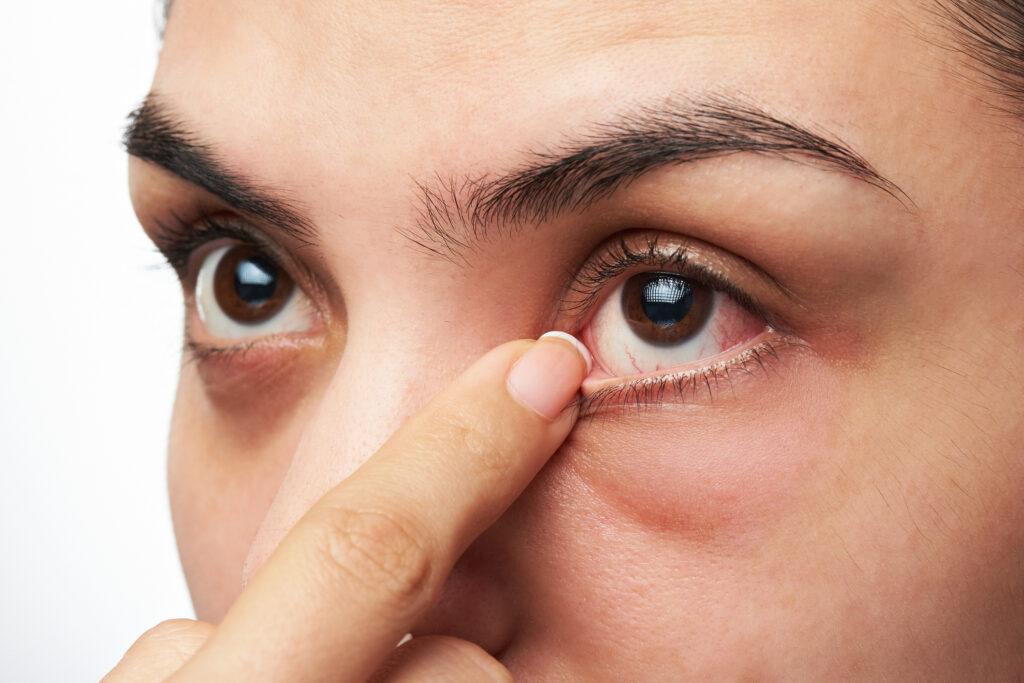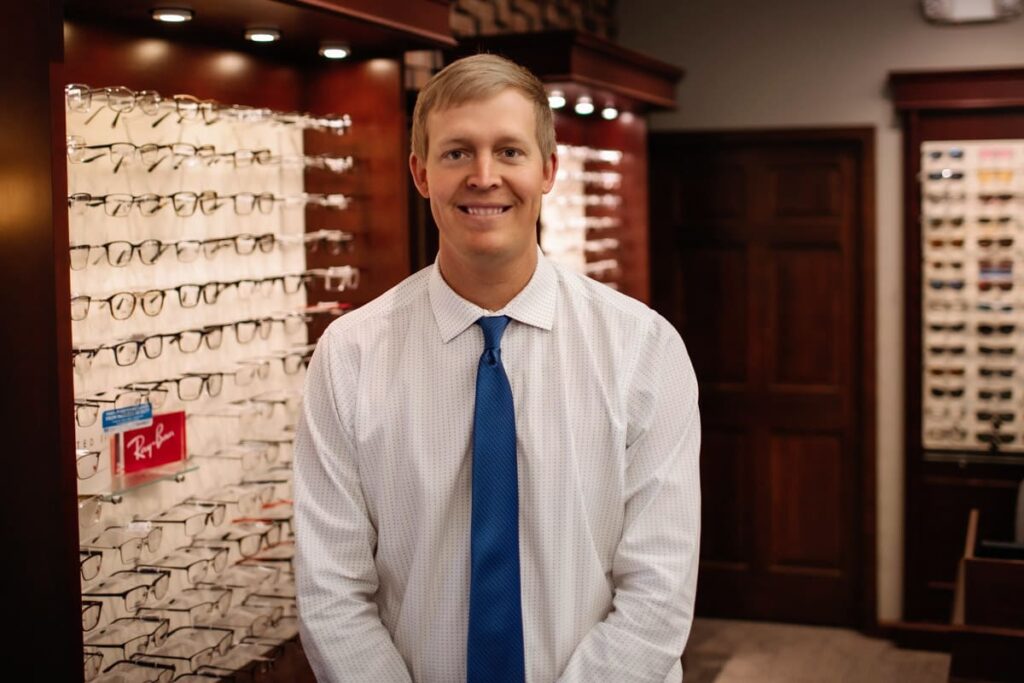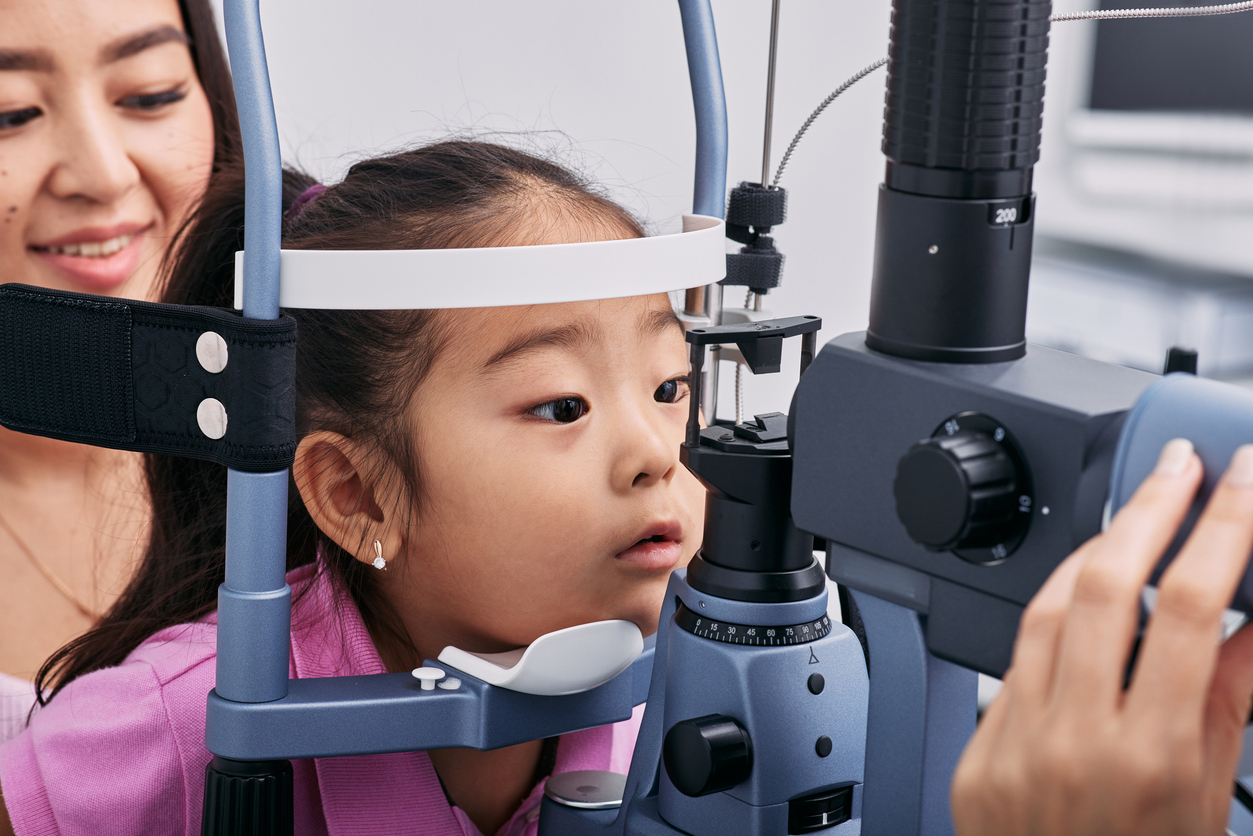You use your eyes on a daily basis for every aspect of your life. They…
Most Common Eye Conditions and How to Address Them

Our eyes are incredible organs that allow us to see and experience the world around us. However, many people suffer from common eye conditions ranging from minor annoyances to serious threats that can impact their vision and quality of life if left untreated.
Below, we’ll discuss the most prevalent eye conditions and offer tips that contribute to improved vision health. By exploring strategies for managing common eye disorders, you can take proactive steps to protect your vision.
Continue reading below to learn more about how to protect your vision health from common eye conditions and discover how Andover & Winfield Family Optometry can help you address your vision concerns.
Overview of Common Eye Conditions
Every year, individuals just like you encounter a variety of common eye conditions that can affect your quality of life. It’s important to recognize the symptoms of eye conditions and understand the various vision correction options and strategies for treating eye conditions.
Let’s explore the common disorders that impact vision and the contemporary methods to manage and treat them.
Refractive Errors
Refractive errors occur when the shape of your eye doesn’t bend light correctly, resulting in blurred vision.
- Myopia, or nearsightedness, enables you to see objects that are close clearly, while distant objects are blurry.
- Hyperopia, or farsightedness, is the opposite, with distant objects being clearer than those close to you.
- Astigmatism causes overall blurred vision due to an irregularly shaped cornea.
Treating these conditions might involve glasses, contact lenses, or refractive surgery, depending on the severity and your lifestyle.
Presbyopia and Cataracts
As you age, your eyes do, too. Presbyopia is an age-related condition where your eyes gradually lose the ability to focus on close objects. Cataracts, on the other hand, cloud the eye’s lens and slowly impair vision.
While presbyopia can be managed with reading glasses or multifocal lenses, cataracts might require surgical removal to restore vision. Both conditions are common and have reliable vision correction options available.
Glaucoma: The Silent Thief of Sight
Glaucoma often progresses unnoticed until it has caused significant damage. It’s associated with pressure buildup inside the eye, which can damage the optic nerve, leading to vision loss or even blindness. Routine eye exams are crucial for early detection. Various treatments, including medication and surgery, can slow or prevent further vision loss.
Age-Related Macular Degeneration (AMD)
Age-related Macular Degeneration (AMD) affects the macula, the part of the retina responsible for central vision, and is a leading cause of vision loss among older adults. Its symptoms include blurred or wavy vision and an empty or dark area in the center of vision. While there is currently no cure for AMD, treatments like anti-angiogenic drugs, laser therapy, and vitamins can slow progression and improve symptoms.
Dry Eye Syndrome
With the digital age in full swing, dry eye syndrome has become increasingly prevalent. Caused by a variety of factors, including screen use, environmental conditions, or age, dry eyes can be more than just an annoyance; they can impact your daily life. Artificial tears, prescription eye drops, or even minor procedures to close tear ducts are options for managing this condition and returning comfort and clarity to your eyes.
The Importance of Regular Eye Exams
It can’t be overstated how pivotal regular eye examinations are for detecting eye conditions early on. The significance of these exams goes beyond just updating your prescription; they serve as a first line of defense in eye disease prevention. When eye conditions are diagnosed early, the likelihood of successful treatment increases dramatically.
Let’s delve into what these comprehensive eye exams entail and the diagnostic processes that could make a world of difference for your sight.
Common Diagnostic Tests in Ophthalmology
Visual Acuity Tests: These are the basic eye chart tests that assess how clear your vision is at various distances.
Tonometry: A critical test for glaucoma detection, tonometry measures the pressure inside your eyes, identifying potential risks for damage to the optic nerve.
Dilated Eye Exam: Involving the use of drops to widen your pupils, this test allows your eye doctor to view more of the inner structures of your eye.
Retinal Imaging: Provides a detailed picture of the back of your eye, helping to identify signs of conditions like macular degeneration or diabetic retinopathy.
Perimetry: This test maps your visual field, highlighting any areas where your vision may be compromised or absent.
By familiarizing yourself with these common diagnostic tests, you can approach your next eye exam with confidence. Remember, embracing the importance of an eye exam and learning how it functions in eye disease prevention can empower you to take charge of your eye health.

Treatment and Management of Common Eye Conditions
Upon receiving a diagnosis of an eye condition, it’s imperative to consider the range of treatment methods available. The right course of action can significantly improve your quality of life by offering clearer vision and managing symptoms. Whether you are adapting to everyday needs with prescription eyewear or considering surgical intervention for a more lasting solution, numerous vision correction options exist to address treating eye conditions.
Prescription Eyewear: Glasses and Contact Lenses
For many, the first line of treatment involves prescription eyewear. Glasses are a convenient choice and can be styled to fit your personality while also offering protection against environmental factors like dust and wind. Advances in lens technology mean that your glasses can include features like blue light filtering or anti-reflective coatings, enhancing comfort during screen use.
On the other hand, contact lenses offer a glasses-free option that can fit almost any lifestyle. With daily, weekly, or monthly disposables as well as extended-wear options, contacts are versatile enough to cater to even the most active individuals. However, they require consistent care and hygiene to prevent eye infections and maintain eye health.
Surgical Options: LASIK and Cataract Surgery
When seeking a more permanent form of vision correction, surgical options may be on the table. LASIK, a type of refractive surgery, uses laser technology to reshape the cornea and rectify conditions like myopia, hyperopia, and astigmatism. With a brief recovery period and a high success rate, LASIK is a popular choice for eligible candidates desiring freedom from glasses or contacts.
In cases of cataracts, cataract surgery removes the clouded lens and often replaces it with a clear artificial lens. This common procedure can restore vision that has been lost due to cataracts and is generally considered safe and effective. Each surgical treatment bears its own set of risks and benefits, which should be thoroughly discussed with your eye care professional to determine the best pathway for treating your specific eye conditions.
Preventative Measures for Maintaining Eye Health
Securing your vision’s future involves more than just corrective measures; embracing preventative tactics is equally vital. By incorporating certain health tips into your daily routine, you can actively contribute to eye disease prevention and overall eye health.
Nutrition and Eye Health
Your diet plays a significant role in the health of your eyes. Essential nutrients can aid in warding off vision-threatening eye diseases while also enhancing your overall well-being. It’s beneficial to include the following nutrients in your meals:
- Vitamins C and E: These antioxidants combat age-related eye damage.
- Lutein and Zeaxanthin: Found in leafy greens, these nutrients protect the macula by filtering harmful high-energy light waves.
- Omega-3 Fatty Acids: Commonly present in fish, they contribute to visual development and retinal function and could also help prevent dry eyes.
- Zinc: This mineral helps to maintain the health of your retina and may play a role in preventing the progression of age-related macular degeneration.
Protecting Eyes from UV Light and Strain
Modern lifestyles expose your eyes to various forms of strain and harmful light. To shield your vision from these risks, consider the following:
- Wear Sunglasses: Choose a pair that blocks 99% to 100% of UVA and UVB rays to prevent long-term UV damage.
- Use Protective Eyewear: When engaging in sports or home improvement activities, safeguard your eyes against injury.
- Follow the 20-20-20 Rule: To lessen screen-induced eye fatigue, every 20 minutes, look at something 20 feet away for at least 20 seconds.
- Adjust Screen Settings: Minimize glare with proper lighting and anti-reflective screen filters, and adjust text size for comfortable reading.
Andover & Winfield Family Optometry — Your Partner in Preventative Eye Health
Your vision health is invaluable, and with the right measures, it’s entirely possible to combat the onset of eye diseases. Taking these proactive steps can markedly reduce the risk of developing eye disorders and maintain your eyes in good health for the long term.
At Andover & Winfield Family Optometry, our expert team is dedicated to providing comprehensive eye care tailored to your unique needs. With state-of-the-art technology and personalized attention, we’re committed to enhancing and protecting your vision.
Reach out to us for an in-depth eye examination and expert advice on managing and treating common eye conditions. Your eye health is our top priority, and we’re here to support you every step of the way.
Are you concerned about your eye health or experiencing vision problems? Don’t let eye conditions hold you back from a clear and comfortable vision. Take the first step towards optimal eye health today.
Contact Andover & Winfield Family Optometry to schedule your appointment. Our experienced optometrists are eager to assist you with any eye concerns and guide you toward the best solutions for your eye care needs.
About the Doctor
Dr. Matt Boswell was born and raised in Wichita, Kansas, where he graduated from Kapaun Mt. Carmel High School. He attended Emporia State University to play on the Men’s Basketball Team while getting his Bachelor of Science degree in Biology, Pre-Optometry. While there, Dr. Boswell made the academic honor roll every year while receiving all-league honors his senior year. After graduating from ESU, he went to Memphis, Tennessee, and received his Optometry Degree from the Southern College of Optometry in 2016. Dr. Boswell is excited to practice back in Andover and Winfield, where he was a patient of Dr. Holman’s growing up and shadowed him in high school.
Dr. Boswell’s areas of interest are comprehensive primary eye care and ocular disease, including glaucoma, macular degeneration, cataracts, and diabetes. He also loves fitting contact lenses and seeing kids. He is an active member of the American Optometric Association and the Kansas Optometric Association. Dr. Boswell resides in East Wichita with his wife, Kirsten, a nurse. They welcomed their first child in February 2022, Baker. They love the outdoors, playing sports, fishing, and staying active with their Bernese Mountain Dog, Franny.




